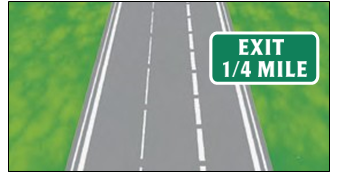California Lane Marking On Road Detailed information
Road lane markings are painted lines or symbols on the road surface to guide and regulate traffic. They indicate things like lanes, turning areas, crosswalks, and more. Lane markings help drivers navigate safely and follow traffic rules.
Why Lane Marking Is Important On Road
Lane markings play a crucial role in maintaining order and safety on the roads. They help drivers stay in their lanes, guide proper lane changes, indicate turning points, and signal potential hazards. Clear and well-maintained lane markings contribute to smooth traffic flow, reduce the risk of accidents, and enhance overall road safety. In the States of California various types of Lane Marking exist on roads.
Lane marking done on the road in California is not only important for the convenience of your vehicle driving but also if you are preparing for DMV driving license test then it is also important for that, if you have complete knowledge of lane marking. So you will be able to correctly answer the questions related to lane marking in the DMV Knowledge Test. Having good knowledge of lane marking reduces the chances of having an accident. Today in this article, we will understand the different types of lane markings done on the roads in the state of California and get detailed information about what these lane markings done on the roads mean. And in this post, you will also get information about what we should do and what we should not do where this marking has been done.
Single Solid Yellow Line:
Avoid passing a vehicle in front of you if there is only one lane of traffic in your direction with a solid yellow line. This indicates that overtaking is not allowed due to potential hazards or limited visibility.
Double Solid Yellow Lines:
Never cross over double solid yellow lines. Exceptions include entering a high-occupancy vehicle (HOV) carpool lane with a designated entrance on the left or following instructions from construction or other signs redirecting traffic.
Two Sets of Solid Double Yellow Lines:
Considered a barrier, refrain from driving over this barrier, making left turns, or U-turns across it unless at designated openings.
Broken Yellow Line:
Passing is allowed when a broken yellow line is next to your driving lane. Exercise caution and pass only when it is safe to do so.
Single Solid White Line:
Indicates traffic lanes going in the same direction, including one-way streets.
Double Solid White Lines:
Act as a barrier between regular and preferential lanes (e.g., carpool or HOV lanes). Avoid changing lanes over double solid white lines and wait for a single broken white line.
Broken White Lines:
Separate traffic lanes on roads with two or more lanes in the same direction. Crossing over broken white lines is generally permitted.
End of Lane Markings:
Marked with large broken lines, ending lanes signify that you should be prepared to exit the freeway or anticipate the lane ending. Look for signs indicating an exit or merge.
Yield Line:
A solid white line of triangles pointing towards approaching vehicles serves as a yield line, indicating where vehicles should yield or stop in specific situations.

.jpeg)

.png)


